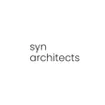
When the Earth Began to Look at Itself - Desert X Installation
ARCHITECTS
Syn Architects
DESIGN TEAM
Sara Alissa, Nojoud Alsudairi, Moath Alqodiby
CONTRACTOR CONSULTANT
Earthman
PHOTOGRAPHS
Lance Gerber, Laurian Ghinitoiu
CONSTRUCTION FIRM
Constantine
AREA
257 M²
YEAR
2024
LOCATION
Alula, Saudi Arabia
CATEGORY
Temporary Installations
We are interested in the possibility and impossibility of establishing physical ties with the geological fabric of AlUla.
In our conviction, everything can always be re-examined and reinterpreted since the apparatus of the perceived environment cannot be measured, anticipated, controlled, or known entirely.
We might start to perceive this connection through a material offering that traces and constructs human and non-human interactions between elements in the surrounding nature.
Through this work, we want to encourage speculation as a means of exploration and reflection to further develop and reshape our understanding of the ecological transition of the site and its physical geographies.
To establish this connection, we start to look freely at material gestures and found forms and let them perform as architecture.
In this way, the work emerges by the dictations of the site itself and the engagement of its spectators and shift the emphasis from the qualities of the work to the aesthetic values of exchanges involved in the processes of investigation around the site itself. Thus, blurring lines between object and subject.
To further establish an understanding of subjectivity in relation to positionality, we reference Rosi Braidotti’s notion of the ‘nomadic subject’.
In her writings, the nomad describes an epistemological condition, a kind of knowingness (or unknowingness) that refuses fixity, that allows us to think between or ‘as if’, to articulate another reality.
These traces inform the pathway to the proposed work and prompt the discovery process of the larger site, playing an important role in creating new kinds of relationships between subject and object.
In essence, we want the work to remain interpretable as it originates from the found forms.
This intervention would operate within an existing site to expose new life or identity through transformation.
Based on a more poetic criteria of time, memory, materiality, and occupation, this form of intervention will operate to raise and intensify our awareness of the surrounding ecology and create a place of meaning and contemplation out of a careful reframing of the familiar.



















